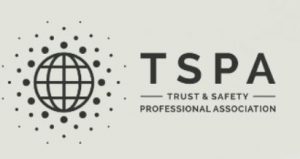My Trustcon 2022 Keynote Talk

* * *
At Trustcon, I delivered a closing keynote talk. My talk notes:
My goal for this talk is to celebrate and to issue a call-to-action.
Celebrate
This event culminates 4+ years of work. That story began with the February 2018 Content Moderation and Removal Event at Santa Clara University.
The impetus for that event dates even further back to Spring 2017, with the first draft of FOSTA. It was clear the drafters knew nothing about content moderation, but it wasn’t totally their fault. Companies rarely talked publicly about their content moderation efforts, even when the information wasn’t really confidential. The whole process was a black box to regulators.
The conference goal was to get companies to talk about their efforts on the record and bridge the information gap. The event achieved that goal and sparked 3 sequels. However, the real lesson from the conference was that trust & safety professionals needed a space to engage with each other. There had been various T&S gatherings, but they were often closed-door, clubby, and off-the-record. We needed more: including ways to build cross-company friendships (and backchannels), share tacit knowledge, avoid recreating the wheel, and network for jobs. Building that infrastructure was a bigger project than I could handle. It needed a team and money.
[For more on TSPA’s history, see this 2020 post.]
That brings us to today, the realization of that recognition from February 2018. What I’ve seen at this event:
- data sharing and cross-company learning
- existing friendships reinforced
- new friendships being built
- the development of a community identity
There is so much upside to come. Trustcon will get much bigger and even better. The conference is just one way TSPA is adding value to our community.
A Call to Action
The emergence of our field into the public eye is a net win for us, but it comes at a cost. Our decisions are now often viewed through a political, and sometimes partisan, lens. This degrades the quality of the discourse about what we’re doing–and what we should be doing.
The visibility of our work has also attracted greater regulatory attention. While we will benefit from engaging in productive conversations with regulators, we should not assume that everyone values user-generated content as much as we do.
How will our community deal with the risks of politicized/partisanized interventions or interventions by those who value UGC differently? I have three ideas of things we can do:
1) Get involved with TSPA. It will help you do your job better, which will benefit everyone. It also shows regulators that we are doing the best we can.
2) Share your non-confidential material publicly. In private meetings, I have seen so many eye-opening statistics that would directly impact the public discourse–but I can’t share the news due to confidentiality. This usually serves no one’s interests.
3) Make sure you are engaged with your government affairs team. Your perspectives are essential to every regulatory discussion. As you know, every policy choice has tradeoffs. We can help make those tradeoffs explicit.
One of the things I love most about our community is its resiliency. Sometimes I think T&S professionals can rise to meet any challenge. TSPA helps us lean on each other and draw strength from each other. I’m excited to see what we can do together.
* * *
Additional notes:
- My photo album from the conferences.
- Read the Journal of Online Trust & Safety.
- In the journal, Zoom published an org chart of its trust & safety function (see page 13). When I organized the 2018 conference, I asked companies to share their org charts publicly. Some companies laughed; others said NFW; and everyone thought I was crazy to ask. Now, companies are voluntarily sharing them publicly. Progress!!!
- At the conference, I heard a talk about FOSTA that I blogged separately.
